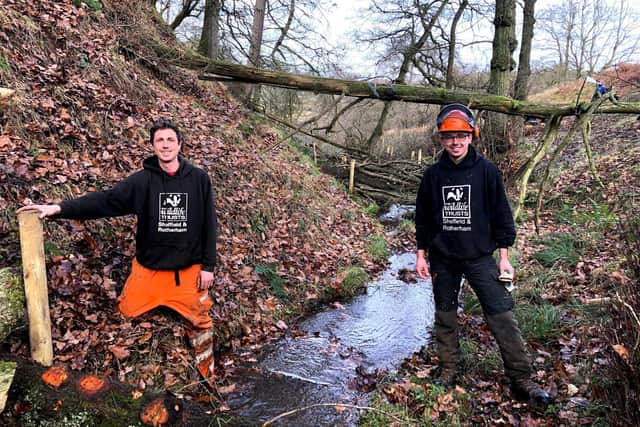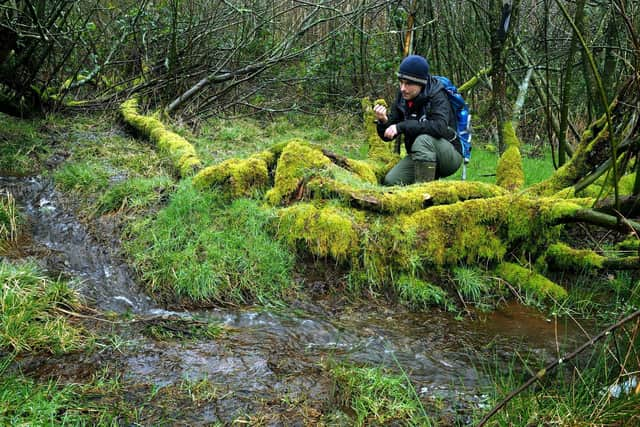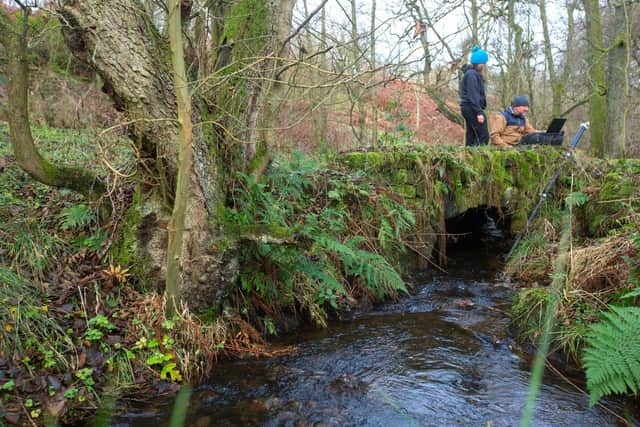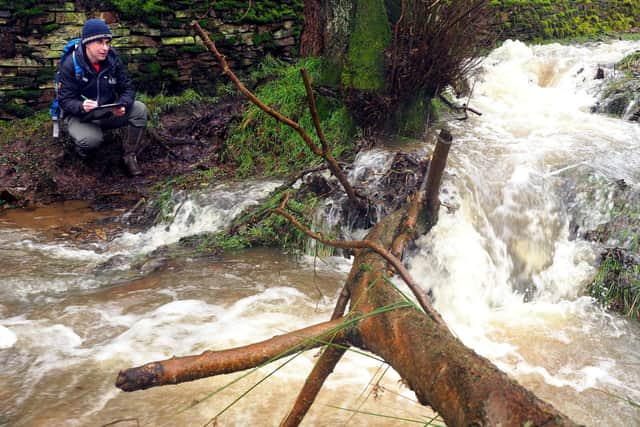Meet Sheffield wildlife teams working like beavers to dam rivers and stop flooding
and live on Freeview channel 276
“They’re mainly using trees on site, often with the ‘chop and drop' approach,” said Nabil Abbas from Sheffield and Rotherham Wildlife Trust, project (and beaver) manager for the Trust’s Working With Water project in Sheffield’s Lakeland.
“They’re building ‘leaky dams’ to help slow the flow of rain across the landscape. A tree falling into a stream eventually gathers twigs and sticks and forms a dam, so in a high flood event, water is slowed and displaced into the wider flood plain.
Advertisement
Hide AdAdvertisement
Hide Ad"We ask them to build their dams well away from buildings and homes, in sets of three, so if one fails we we still have two more doing the job.”


Unlike areas of Scotland, North Yorkshire and Devon, Sheffield has not yet been given the go-ahead to release once-native dam-building rodents into the wild so the ‘beavers’ of the Bradfield parish are actually named Joe Stuart and Martin Reed, field officers for the National Heritage Lottery-funded Sheffield Lakeland Landscape Partnership (SLLP).
Thanks to Dr Jon Bridge from Sheffield Hallam University and his environmental geoscience team, the dam work of the human beavers will be photographed every 30 minutes, day and night, with computerised monitors in the streams to see how the water flow measures up over the next two years.
“This work will give us a good chance of unpicking the impact of natural flood management,” said Jon Bridge.
Advertisement
Hide AdAdvertisement
Hide AdHe added that data from the unique work in Sheffield will help build future schemes all over the country, as huge changes begin in the British countryside following Government promises to genuinely help farmers and land managers look after wildlife and nature and store carbon in the soil and vegetation, as well as produce food.


“The idea in the past was that flooded land wasn’t productive, linked to the Victorian approach to man’s domination over nature with civil engineering solutions to manage water,” Jon explained.
“But now we’re in the situation of working with nature and mimicking natural systems in our engineering and agriculture.”
So, as well as building leaky beaver-style dams, Nabil’s team are working with farmers to keep and enhance wet areas of land (which encourage scarce waders like curlew and lapwing to breed on Sheffield’s slopes), to improve access and prevent erosion of the soil.


Advertisement
Hide AdAdvertisement
Hide AdBy fencing off streams, moss and scrubland can thrive, while protecting livestock from the risk of getting stuck in bogs, which has killed local sheep in the past. And wet land is very good at storing CO2, Nabil added.
The idea is that such nature-based solutions will reduce the spikes in flow seen when heavy rain rushes off heavily-grazed and sparsely-vegetated uplands and thus slow the rainwater’s passage into downstream rivers, reducing the risk of flooding.“We’re thinking about what we saw in the Fishlake floods last year and looking at what we can do at the top of the catchment to save flooding downstream,” said Nabil.
“But this work is not just about protecting the watercourses and slowing the flow, it’s about helping farmers to manage their land well.”
He added: “It’s increasingly accepted that we’re living in a climate crisis and a biodiversity crisis and this work is about helping make the landscape more resilient to the more extreme weather that’s coming, while also helping secure and expand the populations of wetland species.


Advertisement
Hide AdAdvertisement
Hide Ad"Our environment is at breaking point and we urgently need to promote the recovery of nature and work with natural processes to help get us out of these interconnected crises.”
The Working with Water project is targeting 14 sites across the Lakeland area, including five local farms, where farmers are happy to trial ways to protect the landscape alongside the SLLP team.
They are looking to a future where such work may well become commonplace, following the new Agriculture and forthcoming Environment bills in Parliament.
“What we’re doing here is a demonstration off what can be done on farmland,” said Nabil.
“I think it’s a precursor to what we’re likely to see all over the country before long, so we’re ahead of the game here, really.”See: www.wildsheffield.com/SheffieldLakeland